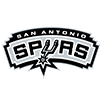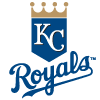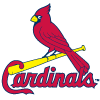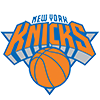While the Twins suffered a third consecutive 90-loss season, Minnesota's minor league system had a banner year and a return to relevance in the AL Central may not be far away. At the major league level the Twins continued to struggle to find any kind of stability in the starting rotation as the team was last in ERA and shuffled through several starters. Minnesota's offense was no better as the Twins were 25th in runs scored. Joe Mauer was having one of his best seasons (.880 OPS) before a concussion ended his season in late August. The Twins traded Justin Morneau at the end of July and didn't re-sign him in the offseason, ending the Mauer-Morneau combination that had been the foundation of the team since 2005.
For all the failure at the major league level, the Twins minor league system had an outstanding year. The Twins enter the 2014 season near the top of almost all the organizational prospect rankings (No. 1 from Baseball Prospectus and No. 2 from ESPN). Led by Byron Buxton and Miguel Sano, the Twins feature two of the ten best prospects in the game by most rankings. But the Twins added depth in the system as Alex Meyer, Stewart Kohl and Jose Berrios climbed into the top 50 of most prospect lists. And that doesn't include Oswald Arcia, who had a strong rookie debut at age 22.
But how soon does this talent come to the rescue at the major league level?
While the Twins suffered a third consecutive 90-loss season, Minnesota's minor league system had a banner year and a return to relevance in the AL Central may not be far away. At the major league level the Twins continued to struggle to find any kind of stability in the starting rotation as the team was last in ERA and shuffled through several starters. Minnesota's offense was no better as the Twins were 25th in runs scored. Joe Mauer was having one of his best seasons (.880 OPS) before a concussion ended his season in late August. The Twins traded Justin Morneau at the end of July and didn't re-sign him in the offseason, ending the Mauer-Morneau combination that had been the foundation of the team since 2005.
For all the failure at the major league level, the Twins minor league system had an outstanding year. The Twins enter the 2014 season near the top of almost all the organizational prospect rankings (No. 1 from Baseball Prospectus and No. 2 from ESPN). Led by Byron Buxton and Miguel Sano, the Twins feature two of the ten best prospects in the game by most rankings. But the Twins added depth in the system as Alex Meyer, Stewart Kohl and Jose Berrios climbed into the top 50 of most prospect lists. And that doesn't include Oswald Arcia, who had a strong rookie debut at age 22.
But how soon does this talent come to the rescue at the major league level? Some of the top prospects could win jobs as early as spring training. Sano will compete for the starting third base job and Meyer for a spot in the rotation. Most likely both get called up after the Super 2 arbitration deadline in June. Buxton hasn't reached Double-A yet and will be just 20 yeas old in 2014. Widely regarded as the top prospect in baseball, he could break the Twins mold of advancing slowly and be in the majors by mi-summer as well. As a result the team the Twins break camp with may look vastly different by September and give fans in Minnesota hope that the later part of the decade can be a return to playoff caliber baseball.
Offseason Moves:
Signed Ricky Nolasco to a four-year, $49 million contract.
Signed Phil Hughes to a three-year, $24 million contract.
The Twins were last in all of baseball in starting pitcher ERA last season (5.26) and last in strikeout rate by a considerable margin (Twins starters had a 4.9 K/9 compared to 6.0 K/9 from the 31st-ranked Rockies). And it wasn't just a fluke as the Twins were 29th in ERA and 26th in K/9 in 2011 and 29th in ERA and 30th in K/9 in 2012. With the higher levels of the Minnesota system lacking in starting pitching talent, the Twins needed to take drastic measures. The Twins were forced to acquire starting pitching in free agency to at least stop the bleeding and provide innings and perhaps develop some kind of foundation for when the top talent arrives. The free agent contracts handed out to Nolasco and Hughes are the two biggest in Twins history, which shows how rarely they've signed top free agents in the past 30 years.
Announced Joe Mauer will move to first base.
Mauer suffered a concussion in August that ended his season. He's said to be back to full speed in the offseaon, but the concussion was serious enough that his doctors and Twins officials decided it was too risky for him to behind the plate again. As a result, his move away from the plate came a few years sooner than expected. His bat will be in the lineup more frequently, but the move fundamentally alters the Twins lineup as paying $23 million per year for a first baseman instead of for a catcher will result in a less optimal lineup and open a big hole at catcher.
Re-signed Mike Pelfrey to a two-year, $11 million contract
Pelfrey struggled with a 5.19 ERA in his first season back from Tommy John surgery, but did have velocity and strikeout rates close to his career averages. His 5.95 K/9 was close to his 5.21 K/9 career average, so he doesn't solve Minnesota's lack of strikeouts from starters. However, the Twins wanted to accumulate starting pitching depth even at the cost of a two-year deal.
Signed Jason Kubel to a minor league contract.
After an injury-plagued 2013 season, Kubel surprisingly returned to Minnesota after he spoke negatively about hitting in Target Field after he departed in 2011. He could win the starting DH job or a reserve outfield role.
Signed Kurt Suzuki to a one-year, $2.75 million contract.
The Twins wanted to sign a veteran catcher with Mauer moving to first base and the team unsure if Josmil Pinto was ready for everyday duty.
Traded Ryan Doumit to the Braves for Sean Gilmartin.
With Mauer taking over first base and questions whether Doumit can play catcher consistently after his own concussion issues, Doumit was traded for a pitching prospect to add dept. Gilmartin is a former first-round pick who struggled last season at Triple-A while dealing with shoulder issues.
Projected Lineup/Rotation:
1. CF Alex Presley
2. 2B Brian Dozier
3. 1B Joe Mauer
4. LF Josh Willingham
5. DH Jason Kubel
6. RF Oswaldo Arcia
7. 3B Trevor Plouffe
8. C Kurt Suzuki
9. SS Pedro Florimon
Minnesota's lineup may be in flux all season as Joe Mauer at third in the order may be the only fixture. Willingham could be traded early in the season as he's in the final year of his contract. Plouffe could be replaced early in the season by top prospect Miguel Sano. Presley has a thin hold on the job with Aaron Hicks lurking at Triple-A and Byron Buxton perhaps ready to take over the job midseason. Suzuki could face competition from Josmil Pinto for the starting job in spring training or end up eventually sharing the role. Kubel is no lock to win a starting job as Sano and Chris Parmelee could win at-bats out of spring training and any prospect that gets called up could push Arcia to DH.
Projected Starting Rotation:
SP1 Ricky Nolasco
SP2 Phil Hughes
SP3 Kevin Correia
SP4 Mike Pelfrey
SP5 Kyle Gibson / Samuel Deduno / Scott Diamond / Alex Meyer
Minnesota's starting rotation may similarly in flux all season, although the big money spent on Nolasco and Hughes should keep them in the rotation all season. Correia is in the last year of a two-year contract, so he's a candidate to be traded if he's doing well – and a candidate to be dropped if he struggles. The fifth starter role will be up for grabs this spring and fairly wide open, but the losing candidates will likely get cracks at openings early in the season if Pelfry or others struggle. The wild card is Meyer, who is Minnesota's best pitching prospect. He could force his way into the rotation after the Super 2 arbitration deadline in June if begins the season strong.
CL: Glen Perkins
Key bullpen members: Jared Burton / Brian Duensing
Minnesota's bullpen is the lone bright spot on the team as Perkins has taken over the closer role and should be a lock to hold the job barring injury. Burton had a second strong season as the primary setup man and Duensing is always tough on lefties. The bullpen has some depth as well with Casey Fien, Caleb Thielbar and Anthony Swarzak (in long relief) giving solid performances last season. However, none of those three have a strong pedigree and are in their late twenties, so it's hard to count on repeat performances.
Notes of Import, Fantasy and Otherwise:
As the Twins approach spring training the biggest questions are:
1. How soon do Minnesota's top prospects arrive in the majors?
Minnesota's roster should look dramatically different between the start and end of the 2014 season. Top prospects Sano and Meyer could make the team out of spring training. However, with the Twins rebuilding it's more likely the Twins wait past the Super 2 arbitration deadline before calling either up. Byron Buxton hasn't played above High-A, but he's such a rare talent that he could jump to the majors as early as mid summer. Eddie Rosario could be in the majors once he returns from a 50-game suspension. Daniel Santana could be a fixture in the infield and make his debut later in the summer. And Kyle Gibson and Trevor May could get a shot in the big league rotation during the summer as well. If the Twins aggressively promote Buxton, it's not inconceivable that the Twins lineup could look like this at some point after the All-Star break:
1. CF Byron Buxton
2. 2B Brian Dozier
3. 1B Joe Mauer
4. RF Oswaldo Arcia
5. 3B Miguel Sano
6. DH Jason Kubel
7. LF Aaron Hicks
8. C Josmil Pinto
9. SS Pedro Florimon
2. Who's the fifth starter?
With the Twins signing Ricky Nolasco, Phil Hughes and Mike Pelfrey along with lone holdover Correia, the final spot in the rotation is up for grabs. Samuel Deduno is likely the leading candidate after a season where he showed promise by walking fewer batters. While Deduno's strikeout rate fell slightly to 5.8 K/9, he cut his walk rate almost in half to 3.4 BB/9. He still walks too many batters and has mediocre velocity (90.3 mph fastball), but he makes up for those shortcomings by getting outstanding movement on his fastball, which induces a lot of groundballs (59.7% of batted balls). Kyle Gibson struggled in his first test of the majors last season (6.53 ERA) but was strong at Triple-A ( 2.92 ERA and 87:33 K:BB ratio in 101.2 innings) in his first full season back from Tommy John surgery. Alex Meyer could also win the job, but it's more likely the Twins give their top pitching prospect some time at Triple-A. Scott Diamond wasn't able to reprise his surprising 2012 season as his usual low strikeout rate worsened to 3.6 K/9, but he still generates enough ground balls to be in the mix. It wouldn't be a shock if the Twins signed a veteran late in the spring to fill the role to give the prospects more time to mature on the farm.
3. Who's starting at DH?
Minnesota enters spring training with no set candidate for DH unlike in previous seasons where Joe Mauer, Justin Morneau and Ryan Doumit all were mainstays for a partial day off. Jason Kubel signed a minor league deal and he may be the leading candidate for the role since he's not a great glove in the outfield. Arcia may be a better fit at DH since he's had a poor glove in the outfield, but the Twins may want Arcia to get time in the outfield to improve. Willingham should really be a DH at this point in his career, but the Twins don't feel he hits as well when not fully involved in the game. That thinking could change if his knees continue to be a problem. Chris Parmelee could also figure into the mix, but he likely needs to prove himself at Triple-A after a disappointing season. Chris Colabello tore the cover off the ball at Triple-A (1.066 OPS) and could also win the DH job, but the Twins were reluctant to give him playing time last season likely since he's 30 years old and may not figure in the team's plans later this decade.
Strengths: Depth in the minor leagues, bullpen.
Weaknesses: Starting pitching, power in lineup, pitching in high minors.
Sleepers
Rising:Oswaldo Arcia had a promising rookie debut at age 22 in the majors by hitting .251/.304/.430 with 14 home runs. His primary asset is his power (24 home runs between the majors and Triple-A), and he had good slugging percentage numbers in the minors. He does struggle to make contact, which was magnified in the majors, as he struck out in 31 percent of his plate appearances. While he earned free passes at a good clip in the minors, Arcia drew walks in just six percent of plate appearances with the Twins. Though his rookie numbers were not overly impressive, Arcia was still able to hold his own for such a young player. If he can increase his walks and reduce his strikeouts to his minor league levels, he may improve dramatically in his second year. He'll also need to improve his defense, as he graded out with a -12.3 UZR in the outfield and ultimately may need to move to first base or DH. Arcia will begin the season as the starting right fielder for the Twins and one of the main building blocks on a rebuilding team.
Declining: Minnesota signed Kevin Correia to provide the team with much-needed innings and he responded with a better-than-expected performance that cements him in the 2014 rotation. Despite a 9-13 record, Correia had a decent 4.18 ERA and threw 185.1 innings, the second-most in a season of his career. However, he seems unlikely to duplicate that performance as he has a weak strikeout rate (4.9 K/9) and mediocre velocity (90.5 mph average fastball). He has continued to improve his control to a career-best 2.2 BB/9 and does generate groundballs (44 percent) at about league average. Still, Correia carries a lot of downside risk given his weak arsenal, but he'll likely begin the season as Minnesota's No. 3 or No. 4 starter.
Sleeper: The true sleeper for the Twins in 2014 is if the team brings up Byron Buxton before September and breaks an organizational trend of not advancing players rapidly. Buxton may be the best prospect in baseball after a season in which he displayed his five-tool talent, hitting .334/.424/.520 with 12 home runs and 55 stolen bases between Low-A and High-A. He began the season by hitting .341/.431/.559 for Low-A Beloit with 32 stolen bases in 68 games. He was then promoted to High-A Fort Myers, where he hit .326/.415/.472 with 23 stolen bases. Buxton, who is said to be the fastest player in the Twins' organization, led the entire minor leagues with 18 triples. He also showed impressive control of the strike zone, striking out in just 18 percent of his plate appearances, while drawing walks 13 percent of the time. Buxton's speed also results in outstanding defense in center field, and while his 12 home runs last season weren't overly impressive, scouts expect him to develop more power as he grows. His performance is more impressive since he did it at just age 19, as few players that young have posted an OPS of .990 in the pitcher-friendly Low-A Midwest League. He quickly drew comparisons to Mike Trout, who displayed similar numbers while playing for Low-A Cedar Rapids in his age-19 season (Trout hit .362/.454/.526 with six home runs in 81 games), and last season Buxton drew praise from many scouts who put him on par with Trout or even said he was the best player they had ever seen. Buxton's speed alone could make him an impact fantasy player even if he struggles elsewhere in his game initially in the majors.
Super Sleeper:Aaron Hicks entered last season as one of Minnesota's top outfield prospects and surprisingly won the starting center field job after an impressive spring training performance (he hit .370 and had a three-homer game) – moving from Double-A to the majors. However, Hicks struggled in his first exposure to the majors by hitting .192/.259/.338 before he was sent to Triple-A in August. He then struggled in the minors with heel and wrist injuries, hitting just .222 and wasn't recalled in September. Hicks had shown great plate discipline and defense, along with improving power in the minors, but almost all of those traits were absent in the majors. There is some hope he'll rebound as Hicks has had a pattern of struggling in his first exposure to each level after being promoted in the minors and he did have eight homers and nine steals despite the disappointing results. Hicks' speed could make him valuable for fantasy purposes even if he disappoints elsewhere. He'll likely begin the season at Triple-A, but should get another chance at the starting center field job at some point during the season. He'll need to improve as his window to win a regular outfield job may be small with Byron Buxton and several top outfield prospects nearly ready for the majors.
Top Prospects
1. Byron Buxton OF
2. Miguel Sano 3B – His prodigious power has made him perhaps the top hitting prospect in baseball and he could contend for a starting job with the Twins in spring training. Sano hit a combined .280/.382/.610 with 35 home runs between High-A Fort Myers and Double-A New Britain. After hitting .330 with a 1.079 OPS at High-A, he slowed somewhat at Double-A by hitting just .236, but he still had a .915 OPS and hit 19 home runs. Sano draws walks at a strong rate (12% of plate appearances), but he also struck out too much (142 strikeouts). He will need to make better contact for his batting average not to be a drag in the majors. Sano showed improvement with his fielding at third base, as he cut his errors nearly in half, but it's still not clear if he'll stick at the hot corner in the majors. He also missed most of winter ball due to a strained ulnar collateral ligament in his right elbow. The injury is thought to be minor, but it could hurt his chances to win the starting third base job in spring training. If Sano doesn't win the starting job in spring training, he could be called up early in the season with a fast start at Triple-A. Along with Byron Buxton, Sano is a key cornerstone in Minnesota's rebuilding plans and one of the top keepers in fantasy baseball.
3. Alex Meyer P - Meyer enters 2014 as Minnesota's top pitching prospect and could contend for a big league job early next season. A 2011 first-round draft pick traded to Minnesota for Denard Span before last season, Meyer wasn't overly impressive at High-A in 2012. He erased any doubts with a strong showing at Double-A New Britain where he had a 3.63 ERA and 73:27 K:BB ratio in 62 innings before coming down with a sore shoulder on June 1. He returned in August to throw 10 scoreless innings and reached 100 mph on the radar gun. He then had an impressive showing in the Arizona Fall League with a 3.12 ERA and blistering 28:7 K:BB ratio in 26 innings. His strong AFL showing should erase any injury concerns and could put him in position to contend for a spot in the Minnesota starting rotation during spring training. However, he more likely begins the season in the minors and gets called up later in the year, as the Twins are typically deliberate in promoting prospects. Whenever he arrives, he looks like Minnesota's future ace at this point and is a top pitcher to grab in keeper leagues
4. Kohl Stewart P - Stewart, the fourth overall pick in the 2013 draft, had a strong professional debut, posting a 1.35 ERA and a 24:4 K:BB in 20 innings spanning seven appearances between Minnesota's two rookie-league teams. He was viewed as the top high school pitcher in the draft and an outstanding athlete, as the high school quarterback turned down an offer to play football at Texas A&M. He has a fastball that can reach the high 90s, which is the kind of velocity the Twins have been lacking in their system. Stewart was limited to rehab work during the Twins' instructional league due to a sore shoulder, but is expected to be healthy in the spring. He could begin his first full season with the Twins' Low-A Midwest League affiliate, but he seems unlikely to emerge in the big leagues before 2016 at the earliest.
5. Jose Berrios P - Berrios, the 32nd overall pick in the 2012 draft, was impressive in his first full season as a professional. He had a 3.99 ERA, 8.7 K/9 and 100:40 K:BB ratio with Low-A Cedar Rapids at just 19 years old. He did give up 10 runs in 10 innings in his final two starts, after missing time with a right elbow contusion, but he's expected to be fully healthy by spring training. The high school draft pick out of Puerto Rico is not huge at 6-0, 190, but he's able to hit the mid-90s with his fastball and is seen as athletic. A strong season at High-A could put him in position to join the Minnesota rotation in 2015.







































